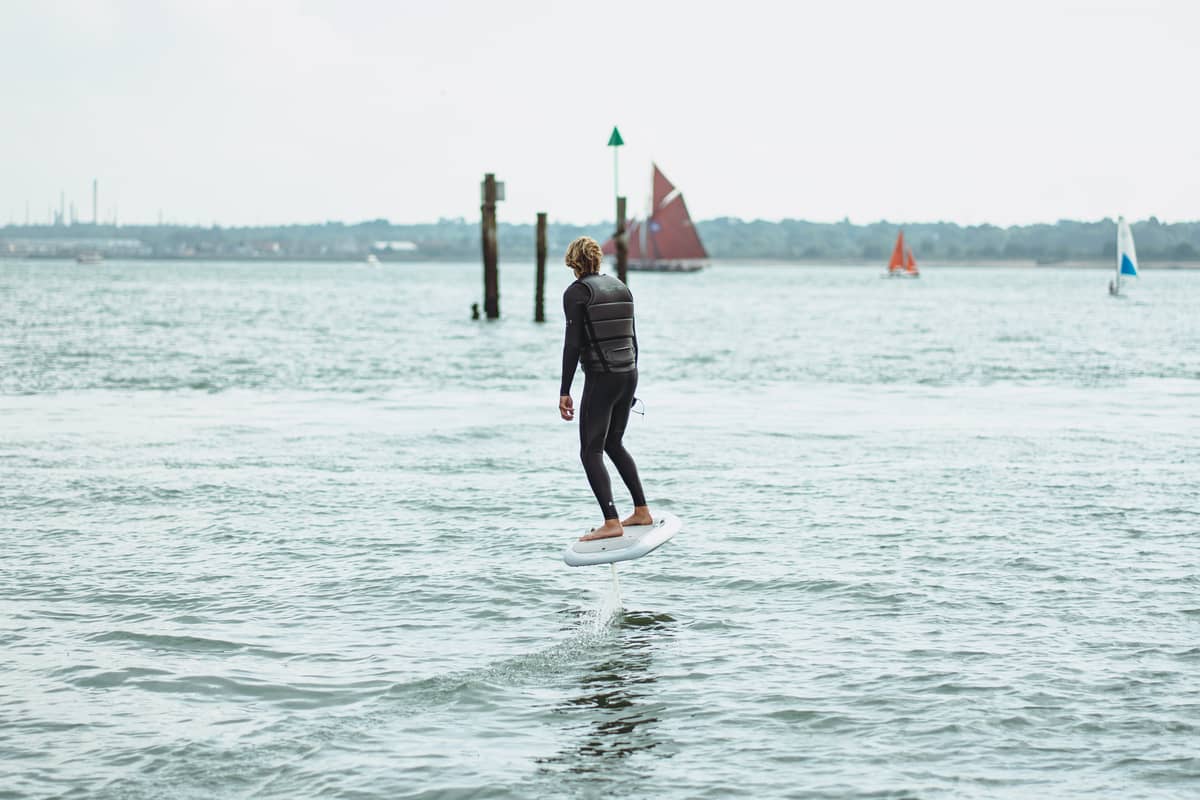Foil Mania
Everything is flying. All watersports in which a boat or board is involved are elevating off the water...on foils. Yes, it is awesome. Here’s how it’s done and what we are seeing on the injury side.

The reason boats have such enormous motors compared to cars is that the friction resistance of water is so great. It takes a tremendous amount of energy to propel a board or a boat forward. This drag is reduced dramatically if the board or boat can be lifted off the water—and this is accomplished with foils.
Foils are those wing-shaped objects we see on the America’s Cup boats, and more recently on the bottom of most windsurf and wing surfboards. The foil consists of a mast or strut that attaches to the board and two wings: a larger one in front and a smaller one behind. When enough speed is generated by the wind in the sail (or the curl of a wave), the board lifts out of the water and literally flies on the wings of the foil. The resistance is negligible, and the potential speeds dramatic.
These wind sports are called wing foiling (on a small wide surfboard); wind foiling (on a windsurf board); and kite foiling ( on an even smaller board, with a sail 30 meters up in the sky). Even sailboats and catamarans, similar to what we saw in the last few America’s Cups, are being fitted with foils.
The motorized versions now include most ferries, as well as smaller recreational boats that used to have huge motors on the back. The absolute most fun version is called an E-Foil, upon which I have just started to become proficient. This small surfboard is fitted with a foil that has a motor inside the deck of the board and a small propeller underwater, just above the rear foil. A hand controller adjusts the speed. With a little practice, the rider stands on the board as it lifts out of the water. The sensation of flying, just over the surface of the sea, is exhilarating.
As with all of our most fun sports, the injuries start to mount as the speeds increase. With wing foiling, for example, the rider holds the sail above his or her head and drops it to chest level to catch more wind. Unfortunately, the repeated overhead-to-chest motion is particularly hard on the shoulder’s rotator cuff. (Try holding a hairdryer over your head for more than a few minutes.) When this motion is done with force, the tendons of the rotator cuff may rub against the bone on top of the shoulder —which can cause them to tear. The cuff tears we see end the sailor’s season and make their life miserable until repaired. The trick is to use the wind, not the muscles of the arm, to raise and lower the sail.
The second most common source of injuries comes from the foot straps. The biggest mistake for a novice sailor is putting their rear foot into the foot strap. With the long lever of the foil arm below the water, any small error in balancing can cause the board to flip onto its side or up in the air. The foot captured in the strap can suffer injury to the ankle, and often worse: torn knee meniscus cartilages and ligaments. Here, the wise advice is to sail without the foot straps until one’s skill level increases substantially.
Head and neck injuries also pop up when the speeds increase and waves are added to the mix. It is not yet clear if helmets add or subtract to sailor safety, as there is no reliable data as yet.
Once, if a surfer fell on a big wave, all they had to worry about was hitting the rocks on the seafloor and/or holding their breath long enough to surface. Now, with the foils, they also have a large, sharp T-shaped object cartwheeling alongside their body. Lacerations are common. Here, helmets probably do make sense.
Almost all of these foil-related injuries are avoidable and will not diminish the enthusiasm for the growing range of foiling sports. As with most thrilling speed activities, using careful judgment about when, where, and how fast to go improves safety. The problem with foiling is that it’s so much fun that it is hard to be restrained, even when the dangers are clear. The sports themselves are foiling our best judgment.
